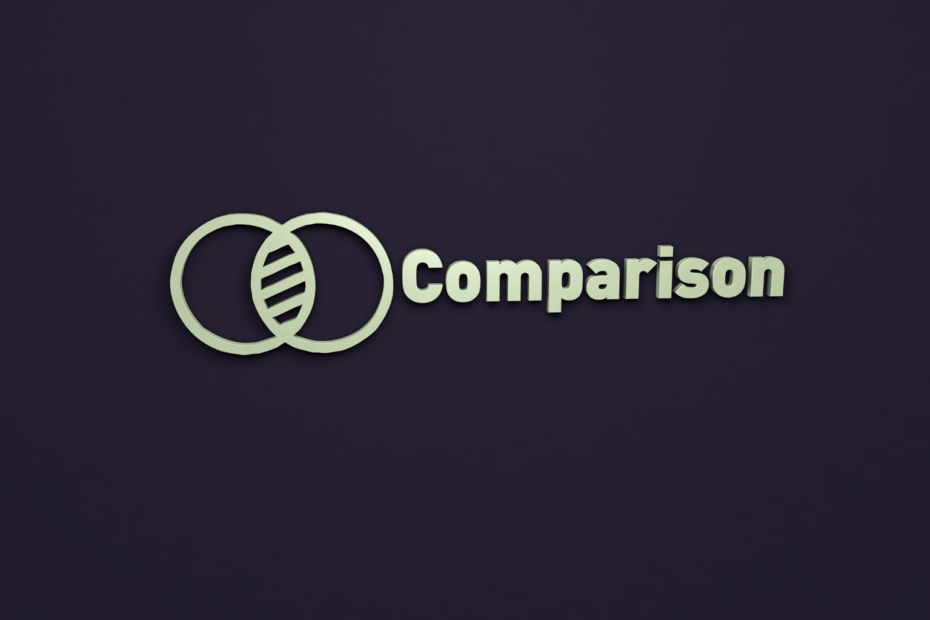Keras is a high-level neural networks API, written in Python and capable of running on top of TensorFlow, CNTK, or Theano. It was developed to make it easier to build and experiment with deep learning models, especially for beginners or researchers who are not experts in Machine Learning.
Keras provides a simple, modular approach to building deep neural networks, with layers that can be easily stacked and configured to create a wide variety of neural network architectures. It also includes a variety of built-in functions for common deep learning tasks, such as data preprocessing, model evaluation, and visualization.
For which Applications can you use Keras?
Keras is already standard in many industries when it comes to training Machine Learning models that have been trained specifically for a use case. On their website you can already see many companies using TensorFlow and Keras and some case studies explain where exactly the framework is used:
- Twitter: The social network uses the Machine Learning framework to populate users’ timelines. It must be ensured that only the most relevant new tweets are displayed, even if the user follows a large number of accounts. To do this, TF was used to build a model that suggests only the best tweets.
- Sinovation Ventures: This medical company uses TensorFlow offerings to train image classifiers that diagnose different types of diseases on images of the retina. Such classifications of images are needed in many applications, including those outsides of medicine.

- Spotify: The streaming service provider uses the advanced version of TensorFlow (TFX) to provide personalized song recommendations to its customers. Compared to Twitter applications, the input, in particular, poses a major challenge, as it must also be ensured that parameters such as the genre, rhythm, or speed of the songs match. These values are much more difficult to represent numerically than the text of tweets.
- PayPal: The payment service provider has built a complex model to detect fraudulent payments at an early stage. It was particularly important that the model should classify legitimate payments as fake as rarely as possible so as not to worsen the user experience.
How are TensorFlow and Keras connected?
TensorFlow and Keras are two popular Machine Learning libraries that are often used together in building and training deep learning models. TensorFlow is an open-source software library for dataflow and differentiable programming across a range of tasks, while Keras is a high-level neural networks API, written in Python and capable of running on top of TensorFlow. It provides a simple and intuitive interface for building neural networks, while TensorFlow offers low-level APIs for building and training machine learning models.
The connection between TensorFlow and Keras can be understood in two ways. First, it can be used as a high-level interface to build and train deep learning models in TensorFlow. TensorFlow provides the computational backend for Keras, allowing users to easily build complex neural networks with minimal code. Keras can run on top of TensorFlow as a module and provides a set of user-friendly functions and classes for building neural networks. By using Keras with TensorFlow, users can take advantage of TensorFlow’s powerful features for optimizing and scaling models, while enjoying the simplicity and ease of use of Keras.

Second, it can also be used as a standalone library, independent of TensorFlow. In this case, Keras uses other backend libraries such as Theano or CNTK for performing the computations. However, when it is used with TensorFlow, it offers several benefits, including faster computation times and better compatibility with other TensorFlow tools and frameworks. Additionally, the framework can take advantage of TensorFlow’s distributed computing capabilities, allowing users to train large-scale deep learning models across multiple machines.
Overall, the connection between TensorFlow and Keras provides a powerful framework for building and training deep learning models. By using the combination, users can take advantage of the best features of both libraries, including Keras’ user-friendly interface and TensorFlow’s scalability and optimization capabilities. This makes it easier for developers to build and deploy deep learning models for a variety of applications, from image recognition and natural language processing to predictive analytics and autonomous systems.
What are the advantages of using Keras?
There are different reasons why many companies already use the open-source framework. These include, for example:
- Ease of Use: Keras has a simple, intuitive interface that makes it easy to build and experiment with deep learning models, even for beginners or researchers who are not experts in Machine Learning.
- Fast Prototyping: It allows for rapid prototyping and experimentation, with a flexible architecture that allows for quick iteration and testing of different model configurations.
- Flexibility: The framework supports a wide range of neural network architectures, including convolutional neural networks, recurrent neural networks, and even custom architectures.
- Transfer Learning: Keras supports transfer learning, which allows users to leverage pre-trained models and transfer the knowledge gained from one task to another.
- Visualization: It includes built-in functions for visualizing model architectures and training progress, making it easy to monitor and debug models during training.
What are the disadvantages of using Keras?
Keras, being a high-level API for building and training deep learning models, has some drawbacks that users should keep in mind. One of its limitations is that it may not provide as much control or flexibility over the underlying model architecture as other lower-level libraries such as TensorFlow. This may restrict advanced users who require more fine-grained control over the model.
Another potential disadvantage of Keras is that it may not be the most suitable choice for certain types of applications. For example, it may not be the best option for developing models for complex tasks such as natural language processing or image segmentation, which may require more specialized tools and frameworks. Moreover, Keras may not perform as well as other libraries when dealing with very large datasets or complex model architectures.
Lastly, due to its high-level nature, Keras may not be as customizable or extensible as other libraries. While it provides a wide range of pre-built layers and functions for building neural networks, modifying or extending these components may not be as straightforward as with a lower-level library such as TensorFlow. This can pose a limitation for users who need to develop custom functionality or integrate Keras with other tools or frameworks.
What are the principles of Keras?
The key principles of Keras are ease of use, modularity, and extensibility. It provides a user-friendly interface for building neural networks, allowing users to quickly prototype and experiment with different model architectures.
The framework is also highly modular, which means that it is easy to create, modify, and combine different layers and models to create custom architectures. This modularity also allows users to reuse and share code across different projects, which can save time and effort in developing and training new models.
Finally, Keras is highly extensible, which means that it can be easily integrated with other tools and frameworks. It can be used with multiple backends, including TensorFlow, Theano, and CNTK, which allows users to take advantage of the strengths of different libraries for different tasks. Additionally, it provides a simple API for defining custom layers and functions, which makes it easy to extend the library to support new types of models or tasks.
What do you need to use Keras?
Keras can basically be used like any other Python library. Thus, a Python environment must be installed on the device. Then you can easily install the Keras module using the pip command “install”. In case you are working in Jupyter Notebooks, you have to add an exclamation mark in front of the command to recognize that it is a terminal command.
pip3 install kerasHowever, in order to use the library, a computer system requirement must be met. Without this, it becomes difficult to train even the smallest machine learning models in a performant way. These requirements include:
- Central Processing Unit: Many models that are not necessarily based on matrices use this component for calculation. Therefore, the CPU should be sufficiently powerful and up-to-date. For Intel, the processor should be at least from the fifth generation or newer. For macOS computers, it is important to note that not all libraries may have been adapted to the new Apple M-series chips yet. Accordingly, a different procedure must be followed when installing TensorFlow and Keras, for example.
- RAM: The amount of memory should be at least 8 GB if possible. In each training run all records of the batch will be loaded into RAM. If this is not large enough, the batch size may have to be reduced, i.e. the number of data points per training run. This can have a serious impact on the performance of the model. Thus, even simple models with images can quickly run out of RAM on computers with 4 GB of RAM.
- Graphical Processing Unit (GPU): Neural networks are based on the so-called tensors. These can be calculated much faster with the help of graphics cards than with the processor. This is because tensors are very similar to the representation of images in numbers. A computer equipped with powerful graphics cards can therefore potentially greatly accelerate training.
This is what you should take with you
- Keras is a high-level neural networks API, written in Python and capable of running on top of TensorFlow, CNTK, or Theano.
- It can be used as a standalone library or on top of other Machine Learning frameworks such as TensorFlow.
- The library is especially easy to use, modular, and extensible and builds a perfect starting point for beginners to build their first Machine Learning model.
What is Jenkins?
Mastering Jenkins: Streamline DevOps with Powerful Automation. Learn CI/CD Concepts & Boost Software Delivery.
What are Conditional Statements in Python?
Learn how to use conditional statements in Python. Understand if-else, nested if, and elif statements for efficient programming.
What is XOR?
Explore XOR: The Exclusive OR operator's role in logic, encryption, math, AI, and technology.
How can you do Python Exception Handling?
Unlocking the Art of Python Exception Handling: Best Practices, Tips, and Key Differences Between Python 2 and Python 3.
What are Python Modules?
Explore Python modules: understand their role, enhance functionality, and streamline coding in diverse applications.
What are Python Comparison Operators?
Master Python comparison operators for precise logic and decision-making in programming.
Other Articles on the Topic of Keras
The official website is linked here.

Niklas Lang
I have been working as a machine learning engineer and software developer since 2020 and am passionate about the world of data, algorithms and software development. In addition to my work in the field, I teach at several German universities, including the IU International University of Applied Sciences and the Baden-Württemberg Cooperative State University, in the fields of data science, mathematics and business analytics.
My goal is to present complex topics such as statistics and machine learning in a way that makes them not only understandable, but also exciting and tangible. I combine practical experience from industry with sound theoretical foundations to prepare my students in the best possible way for the challenges of the data world.





